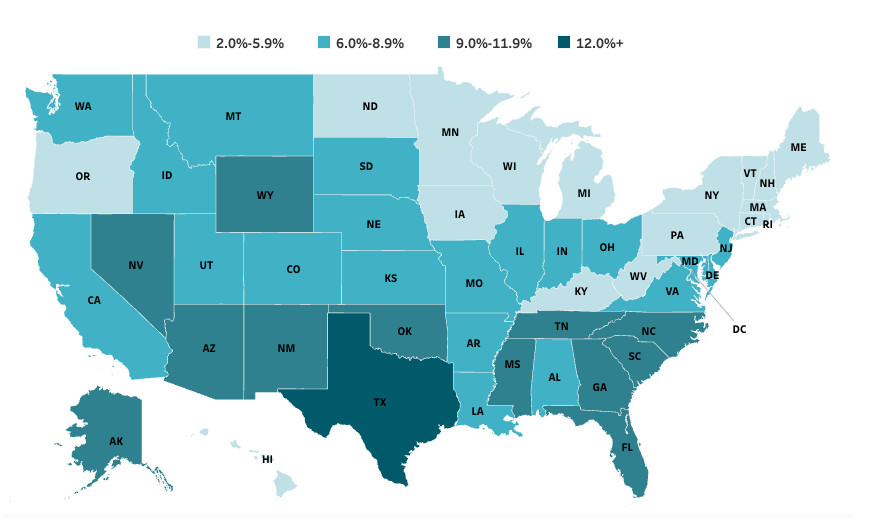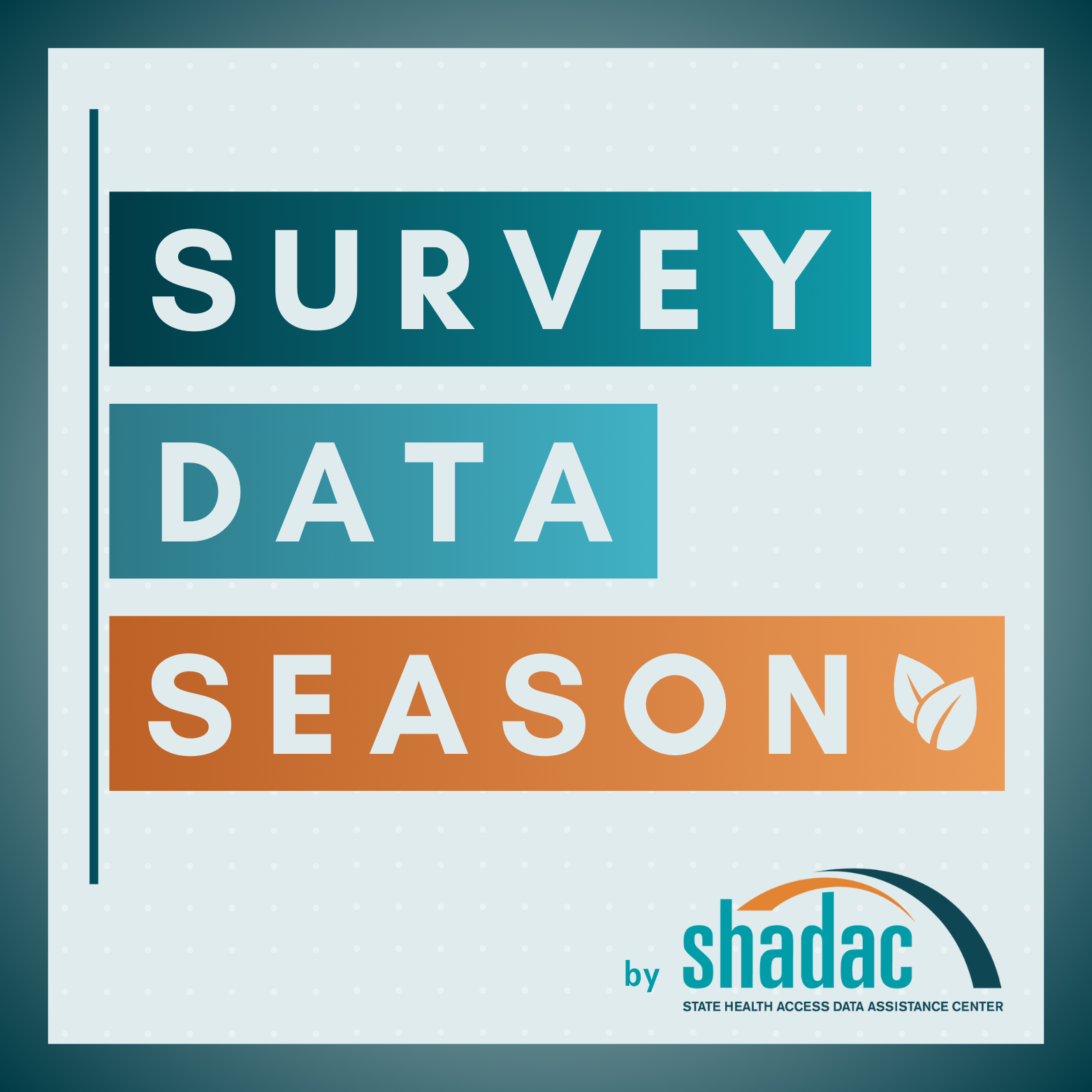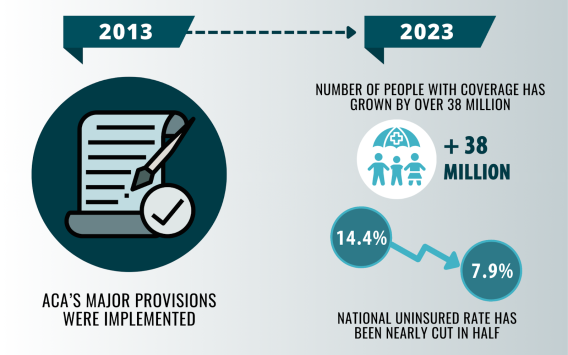Health Insurance Coverage Type
Measure Overview
Knowing who has health insurance coverage and what type of coverage they have, and, importantly, who doesn’t have coverage, is a foundational building block in understanding health needs of a population (ability to access and utilize care and services), understanding affordability (costs of care both in dollars and in behavior changes), and is an important consideration when assessing quality of care and health outcomes.
State Health Compare provides annually updated state-level measures of health insurance coverage using single-year data from the U.S. Census Bureau’s American Community Survey (ACS) by multiple types of coverage including Medicare, employer-sponsored insurance (ESI), Medicaid, and individual coverage, as well as no insurance coverage, and across a number of breakdowns, including: age, citizenship, disability status, education, family income, health status, limited English proficiency, marital status, poverty level, race/ethnicity, sex, and work status.*
*As SHADAC and other organizations have documented, the COVID-19 pandemic was the cause of several substantial disruptions to data collection and dissemination efforts for the 2020 ACS, impacting 2020 single-year estimates of health insurance coverage. Though the 2016-2020 5-year data were able to be released as usual, SHADAC will continue to monitor any future changes to federal data releases directly or indirectly related to the pandemic. Estimates of coverage for 2020 from the Current Population Survey are available here.
State Health Compare provides annually updated state-level measures of health insurance coverage using single-year data from the U.S. Census Bureau’s American Community Survey (ACS) by multiple types of coverage including Medicare, employer-sponsored insurance (ESI), Medicaid, and individual coverage, as well as no insurance coverage, and across a number of breakdowns, including: age, citizenship, disability status, education, family income, health status, limited English proficiency, marital status, poverty level, race/ethnicity, sex, and work status.*
*As SHADAC and other organizations have documented, the COVID-19 pandemic was the cause of several substantial disruptions to data collection and dissemination efforts for the 2020 ACS, impacting 2020 single-year estimates of health insurance coverage. Though the 2016-2020 5-year data were able to be released as usual, SHADAC will continue to monitor any future changes to federal data releases directly or indirectly related to the pandemic. Estimates of coverage for 2020 from the Current Population Survey are available here.
Generate customized graphics using this data by selecting one of the options below.
Related Products

2023 ACS Tables: State and County Uninsured Rates, with Comparison Year 2022
Each year, SHADAC uses data released from the American Community Survey (ACS) to produce estimates of uninsurance at the state and county level. This product presents uninsured rates by state, sub-state geographies, and by demographic characteristics for 2023 and comparison year 2022 via an interactive map.

2023 ACS: After Two Years of Decline, Uninsured Rates Increased for Children; Public and Private Coverage Rates See Variations Across the States

15 Years of the Affordable Care Act: More Americans Than Ever Have Health Insurance Coverage
Sunday, March 23, 2025 marked 15 years since the Affordable Care Act (ACA) was signed into law. In this post, we take a look at what the Affordable Care Act is, how it’s changed America’s insurance coverage rates, and the impact of the ACA on uninsured populations.
